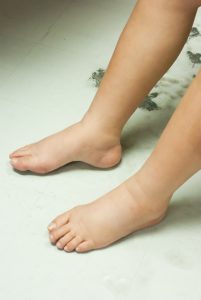Four Things To Know About Lymphedema
 Swelling following an illness or injury is not uncommon. During treatment, your physician may advise you to perform simple and safe exercises to help reduce the affliction. Elevation of the affected area, plus massage and compression may also bring relief. In some cases, however, swelling is a sign of a more serious condition like lymphedema, which requires careful management.
Swelling following an illness or injury is not uncommon. During treatment, your physician may advise you to perform simple and safe exercises to help reduce the affliction. Elevation of the affected area, plus massage and compression may also bring relief. In some cases, however, swelling is a sign of a more serious condition like lymphedema, which requires careful management.
What is Lymphedema?
Lymphedema is a condition of the body in which the arms or legs–partial or whole–suffer prolonged swelling. Those affected may experience a feeling of thickness in the fingers or toes and have trouble moving their limbs. Unlike other types of swelling, lymphedema happens due to a blockage in the body’s lymphatic system, which manages the body’s fluid levels and aids in immunity. Blockages can result from surgery or physical injury, and the swelling may occur anywhere from a few days to a few weeks after the initial blockage.
Is Lymphedema Hereditary?
Studies have shown that a certain type of lymphedema is genetic, though it is a rare condition. According to research from Memorial Sloan Kettering, black and Hispanic women may be more susceptible to lymphedema following cancer surgery where lymph nodes are removed.
Is Lymphedema Fatal?
Lymphedema is a chronic condition and is not wholly curable. However, with proper management, one can work to reduce swelling in places and resume a high quality of life. When lymphedema begins to show signs of visibility, you may see and feel spots in the affected area that feel soft. Over time, these areas may become denser and the skin rougher if left untreated.
Lymphedema in its early stages is not considered fatal. However, this condition left ignored could result in bacterial infections that may cause severe pain and illness, eventually leading to death. It is important for the lymph to properly drain in order to keep your body health. If you experience symptoms of lymph blockage leading to swelling, it’s important to consult with a physician for the next steps in treatment.
How is Lymphedema Treated?
Depending on the severity of your condition and other health factors, your lymphedema treatment may vary. You treatment program may include one or more of the following:
- Manual lymphatic drainage – this massage technique is designed to move lymphatic fluid from the affected area to a functioning lymph node. From there, the fluid will properly be absorbed, and the swelling reduced.
- Supervised exercise – movement is good for the joints and muscles, and improved circulation can also help your lymphatic system.
- Compression – compression therapy is designed to keep lymphatic fluid from collecting in the affected area. Restrictive bandaging or garments are worn to reduce accumulation.
At Bon Secours Physical Therapy, our expert physical therapists will work with you to determine the proper treatment for your lymphedema management. Don’t wait until the swelling becomes too uncomfortable or painful to properly handle. Contact us today to learn more about this program and other PT options available to you.
